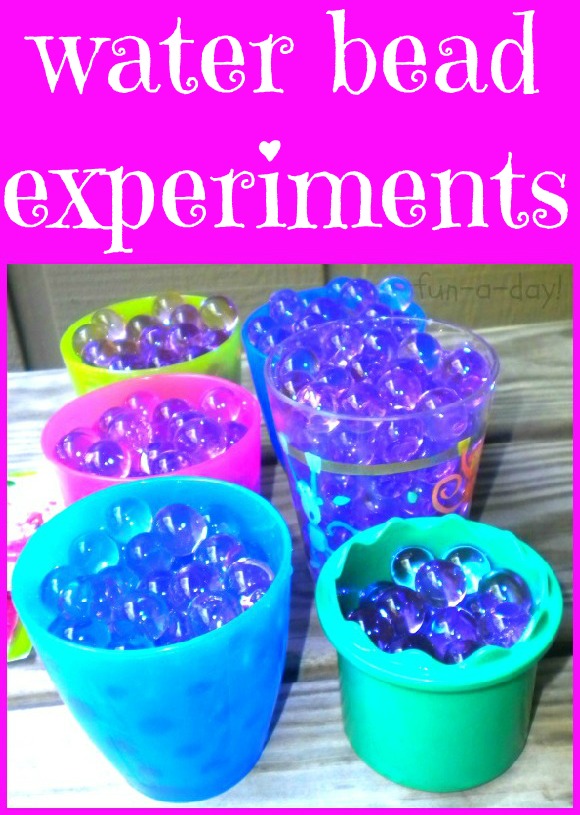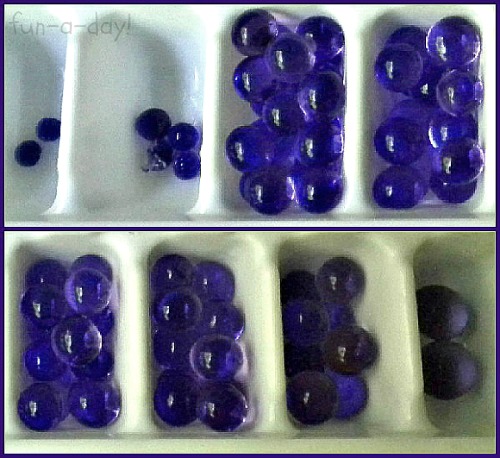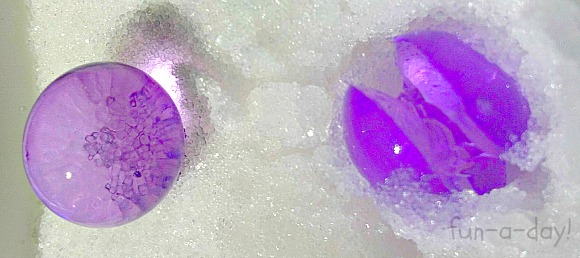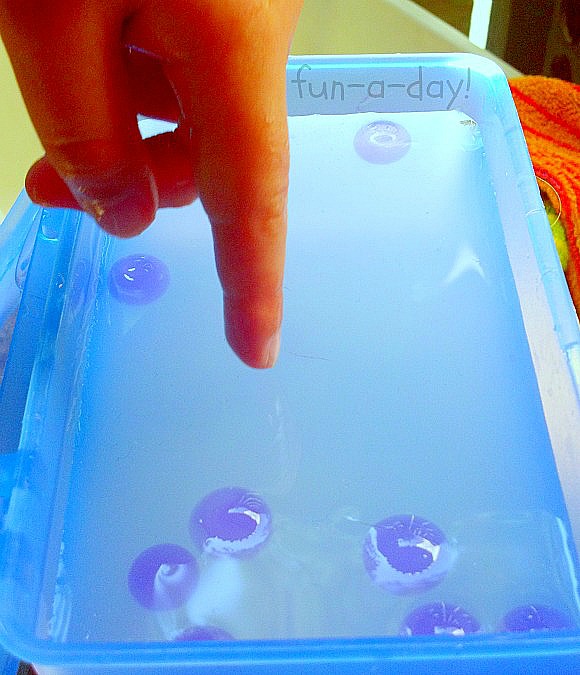Teach students about osmosis with these water bead experiments, one of our super fun summer activities for preschoolers! In this experiment, children will learn the effects of salt, water, and air on fully expanded water beads all while engaging in a super fun sensory activity!
Between cleaning, errands, and some lazy down time, we decided to do some water bead experiments. Engineer really wanted to examine how the water beads, left in water overnight, compared to an unused package. He thought it was the coolest thing that we filled 6 cups with big water beads, while the “baby beads” fit in one hand.
There were some beads strewn about the porch, so we decided to pick them up and examine them as well. Engineer sorted those by size, which led to the question “why are some still so small?”. I talked him through answering his own question, and he figured out that the smallest beads likely dropped out of the water table early yesterday. He was adamant that they have more time in the water today, so we cleaned them off and added them to the water table.
A friend of mine recently told me about using salt with the water beads, so I asked Engineer if he wanted to try that. Of course, he was quite enthusiastic about it! We talked a little bit about dehydration (removing water) and hydration (adding water), and how salt dehydrates. As is his way, he went way overboard with the salt, but I wasn’t too concerned about it. We found that covering the beads in salt tended to make them shrink and crack.
Water Bead Experiment Materials
Since we were building on an activity from yesterday, we really only needed an additional bin and salt for today’s experiment. If you’re starting from scratch, here’s what you’ll need (:
After covering various water beads in salt, Engineer wanted to mix salt and water. I didn’t discourage his further exploration, as I love watching where he takes things (well, usually)! He noted that the beads in the water table sank to the bottom, whereas those in salt water floated. This led to a great discussion about salt water, fresh water, oceans, and floating.
After about half an hour, the beads in the salt water shrank, but didn’t crack. We’ve saved some to see what happens when left overnight in the salt water. Some of our water beads are sitting out on a paper towel to see if they shrink tonight, as well. I just hope Engineer doesn’t decide to wake up even earlier than usual to check on our experiments!
UPDATE:
- Yes, Engineer did wake up early to check on his experiments! I’m glad he loves science, but I wish that didn’t interfere with my sleep. 🙂
- Overnight, the beads in the salt water shrunk.
- Overnight, the beads on the paper towels shrunk, too. In fact, the water beads on the paper towels shrunk more than those in salt water.
What sort of experiments have you and your kiddos done with water beads? I would love to hear about them in the comment section below!!
Done-for-You Preschool Resources
Getting to be in the moment doing hands-on activities with your students is the best thing in the world! But sometimes being prepared and present means we have so little time to plan lessons. That’s where Preschool Teacher 101 comes in!
Click on any of the images below to learn more about each resource. We have a huge variety of themes!
Don’t forget to check out our membership options to become a member of The Pack by Preschool Teacher 101!







I work at a preschool and we play with water beads all the time! We experimented with changing the colors of them! I didn’t have clear beads on hand, so we added food coloring to the blue and pink beads that we had. We were able to make green, purple and orange beads! I tested them by adding some to water bottles filled with colored water and shaking them up. I learned later though that when you wash them and let them sit in clean water, they go back to their original color. Maybe this could be a new experiment to try in your household!
Love your suggestions, thank you! 🙂